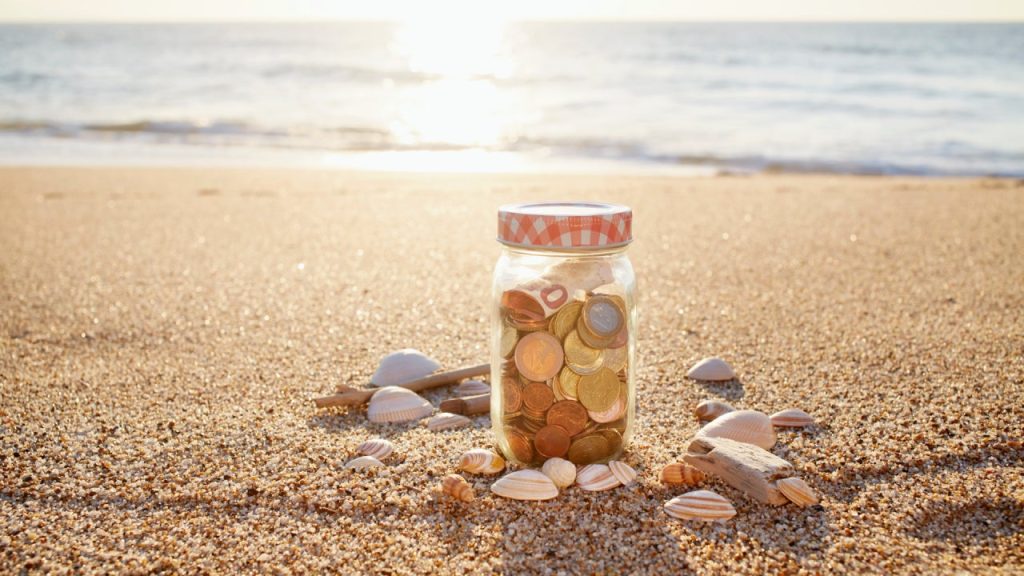My girlfriend and I have saved what, to us, feels like a life-changing amount of money. It’s the most we’ve ever socked away from paychecks, project bonuses and “surplus” found under the metaphorical couch cushions (meaning, the money we instantly saved when I deleted food delivery apps from my phone).
We earmarked this money for a down payment for a future dream home, the first we’d buy together as a couple. But over the past two years, as mortgage rates crept up from their pandemic-era nadir and housing inventory remains stubbornly low around the country, we’ve been forced to rethink a lot of dreams we had for that lump sum sitting in savings.
“It’s the first-time homebuyers who are probably getting hit the hardest,” said Charlotte Geletka, managing partner at Silver Penny Financial in Atlanta, Ga. “They’re having to weigh the benefits of waiting versus going ahead and purchasing a home.”
The Federal Reserve seems to be on course to lower rates this fall, after it decided at its July 31 meeting to maintain interest rates at the target range of 5.25-5.50 percent. While mortgage rates could be lower in the near future, so, too, could those high-yield savings rates.
In the meantime, those house hunters across America who are sitting on enormous piles of cash may be wondering where to put their money until they find that perfect opportunity. And, for those who are first-time buyers such as us, sometimes that money makes up the most they’ve ever managed to save. We want to make sure we’re parking it somewhere safe and smart.
Timing is everything
Stephanie Genkin, a Brooklyn-based financial planner and founder of My Financial Planner, offers a solid guiding principle for house hunters: always prioritize your personal time horizon.
“It’s everything,” she said. “If you’ve already saved for a down payment, we’re looking to preserve the value of the money with, in most cases, the most flexibility. We don’t want this to be volatile.”
But before opening any new accounts or moving money around, Geletka recommends house hunters first think seriously about the time horizon ahead of them.
Perhaps you’ve saved up enough money to put down for a house in your price range, but you’re in no rush to move until you find the place that ticks all the boxes. These people have more time — and more options. If you’re not ready to buy a home today but know you want to be able to move in the next year, or three years, or even longer, then you can also split up your down payment into smaller sums amongst different savings vehicles. Perhaps $10,000 goes to a more liquid, accessible option, for example, and you put another $10,000 in something riskier, such as a stock mutual fund.
But those options aren’t as realistic should you need housing as soon as possible — say, for example, you’ve already sold your current home and need somewhere to move in quickly.
In these cases, Geletka said, you’re working with with a more limited set of options for storing the down payment. Keeping that crucial amount of money liquid, and thus easily accessible, shoots to the top of the priorities list.
“The thing about real estate is that those with cash, and can move quickly, end up in places they want to be,” Geletka said. “The person who is ready to go is going to be a more attractive buyer than the person who is not quite there yet.”
Once potential buyers have that timeframe in mind — shorter-term prioritizing liquidity, or longer-term allowing for more risk — then they can explore vehicles that make the most sense for their housing goals. If you have more time and enough money saved to do so, you can also split the lump sum into different portions; but that’s also up to the individual buyer and their personal risk tolerance, Geletka said.
If you’re like us — working with a smaller amount over which you’re feeling especially protective — you may want to avoid volatility altogether.
High-yield savings accounts
Those working with the shortest time horizons are best served keeping their down payments in a high-yield savings account. The money is still incredibly accessible, but it will earn more than it would just sitting in a checking account. And the upside to the past few years’ worth of rate increases: higher yield on these accounts.
As of the week of July 24, banks such as BrioDirect and UFB Direct are offering annual percentage yield, or APY, north of 5 percent (5.30 percent and 5.25 percent, respectively). Depending on how large your down payment may be, that little boost, while keeping your money accessible, could be a huge pro to this option.
Make sure to read the fine print on some of these high-yield savings accounts. Some, such as BrioDirect, require a minimum deposit. Others, such as Bask Bank, offering 5.10 percent APY, charge for outgoing wire transfers.
Certificates of deposit (CDs)
If you’re not yet ready to buy a home, certificates of deposit, or CDs, allow you to stash that money for a longer period of time with a fixed APY. You can find short-term and long-term CDs with terms typically ranging from three months to five years or more.
As of the week of July 22, rates on those longer-term CDs aren’t looking much better than 5 percent APY, and even promotional rates from larger banks, such as the 4.50 percent APY offered on 7-month CDs currently promoted by both Wells Fargo and U.S. Bank, won’t beat the rates offered on high-yield savings accounts mentioned above.
But putting your money in a CD will also lock in a rate for the term of the CD, and that could last through potential rate drops. Those same housing hopefuls looking for lower mortgages could then see the rate dropping on their high-yield savings account, too.
“When the rates go down, there’s a knock-on effect: rates will go down in these high-yield accounts,” Genkin said. “These high-yield rates are not going to endure during the period you’re planning to hold the down payment. If you want to lock in the rates now, get a 1-year or 2-year CD.”
So if a potential house hunter is especially concerned with putting their money somewhere that guarantees a consistent rate, one of these CDs with a 5 percent or higher APY rate — such as the 1-year CD from Bask Bank, at 5.25 percent APY, or the same term from Limelight Bank, at 5.15 percent — could seem like a better fit.
“If rates go down, you’re locked in,” he said. “Almost certainly, rates won’t go up. They may stay flat or fall in the next six months, so you could lock it in a little higher than you could with a savings account.”
But if you need to withdraw the money in your CD before the maturation period, be wary of the penalties many banks impose. These penalties aren’t simply a fat fee; they can range typically from 90 days to a whole years’ worth of interest on your deposit.
But you can also split your down payment amongst multiple CDs with various maturation periods, or terms, in order to take advantage of the benefits of longer-term CDs, while still keeping more money liquid once shorter-term CDs mature. Building a “CD ladder” requires a little more research on the frontend and some ongoing maintenance, but you’ll also be able to take advantage of the higher rates offered on some short-term CDs while still guaranteeing a more consistent rate for the amounts you’ve placed in longer-term CDs.
Keep in mind, however, that should rates go down as you’re building the ladder, you may be forced to reinvest some of that money in a new CD with a lower APY, once the maturation period comes up.
Investing
Some prospective homebuyers may balk at the idea of investing a portion — or all — of their hard-saved down payment in the stock market. But others working with a longer time horizon and higher risk tolerance may be curious about the potential advantages.
After first taking stock of the various options and how they sit with your own appetite for risk, you can also combine lower-risk options — such as corporate bonds, for example — with riskier vehicles such as index funds.
If you’re going to buy a house any time in the next decade, Genkin cautions against throwing all of your dollars into the broad market basket. If the perfect housing opportunity comes along, you might not have the funds accessible to move quickly, and a drop in the market means you could miss out on more than some gains. You could miss out on your dream home.
“I really want to emphasize that if you have this saved for the down payment on a house, it maybe the largest stash of cash you’ve ever saved in your life,” Genkin said. “Markets can turn on a dime, so don’t play fast and loose with your money.”
But those working with a longer time horizon — say, someone waiting to buy a new home once they retire in 15 years, or a couple considering the bigger house they’ll need once they start growing their family in the next decade — have a great opportunity to take on more risk and maximize the potential of their down payment. If you’re worried about a potential bear market, you can always portion out a smaller chunk and put it in the market — just make sure not to check it every day.
“Over 10 or more years, you could get a rate of return higher than what you would get keeping it in a bank — and if there are some drops, you can ride out the storm,” he said.
Bottom line
If you’re an eager house hunter looking to park your hard-earned cash as you wait for interest rates to go down, first consider both your own time horizon — when you’ll need or want to move into a new home — as well as your own relationship with risk. These will help inform where you want to put your down payment, whether it be in a high-yield savings account, certificate of deposit or elsewhere, such as a regular savings account or even a high-yielding money market account. Depending on how long you plan to wait and how much money you’ve saved, you can also portion out chunks of your down payment for different savings vehicles.
Read the full article here










